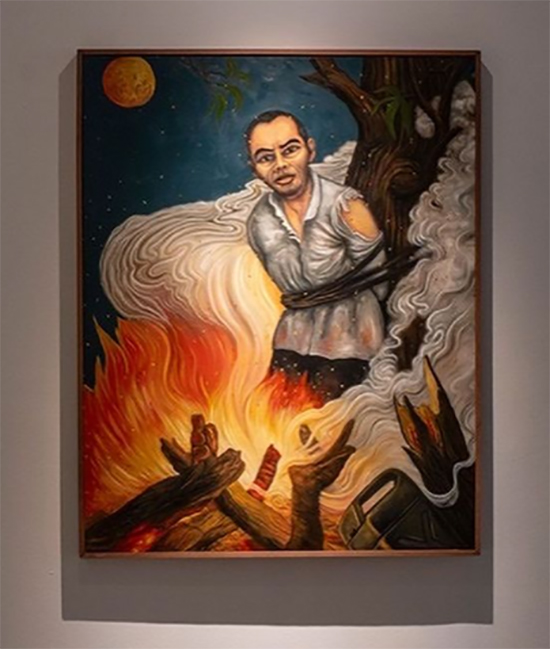Death to decoration
Robert Langenegger knows that the walls of a gallery are barren, and the floor is cold and drab. In his self-written exhibition notes for his solo show, “Harvesting the Void,” at ArtInformal, he writes: “We should not waste time and energy in glamorizing and giving relevance to decoration.” I’m no longer inclined to do so, either.
Langenegger’s show took place last October. To be frank, I had only been to a gallery in the flesh once since March 2020. Every step outside of the house is a judgment of what’s essential or not. Groceries, work, necessities — essential. An exhibition space? Not as much. That’s not to be conflated with whether art is essential or not, which is an entirely different debate altogether. I’m asking as an audience, after all. But as the months passed, so did the gap between white cubes and nearly everything else. Not that art should be evaluated by its faithfulness to reality, but is it too much to ask not to look away?
Because Langenegger does not. Nor do the figures present in his paintings. A bleached-haired butcher stares into his reflection in a rusty cleaver as he slices exotic animals (“What Happens in Wuhan Stays in Wuhan”). A woman gazes over her shoulder as she practices knotting a hangman’s noose (“I’d rather have roses on my table than diamonds around my neck”). A white missionary evangelizes a sweating peasant by shoving erotica into his face (“Sulphur gatherers ain’t got s*** on the coffee pickers of Mount Bromo”).

The most haunting of the works is “Every man who takes a stand helps keep the flame of freedom burning,” wherein a man tied to a stake moments from being burned stares at you impenetrably. Whether he’s begging you to save him, admonishing you to avoid his fate, or challenging you to outdo him says more about the viewer than the figure himself. Around him, flames and smoke swirl around languidly, while in the distance, stars twinkle in the clear night sky.

Nothing is sacred in the 21st century, yet this notion still threatens traditional ideas of art and its European roots. “El Majo Desnudo” nods to Francisco Goya’s “Nude Maja,” which incited outrage amongst Spanish aristocrats for depicting natural female pubic hair. (Unfortunately, by the nebulous “community guidelines” that social media sites claim to abide by, this still seems to remain profane.) But the disarming gaze of Langenegger’s reclining nude and its flaccid member is too seductive to brush off, lingering even after stepping out of the gallery.
When you stand in front of Langenegger’s paintings, you do it on their terms. They’re writhing in both agony and ecstasy, with body fluids of all orifices nearly spilling onto the concrete floor. These are impulses everyone has but refuses to speak about. I found catharsis. Sometimes the hardest truths to swallow are the ones you must accept the most, even when there’s no spoonful of sugar to make the medicine go down.
A common primal reaction to negative stimuli and exquisite pain is to laugh uncontrollably. It’s theorized to be a cognitive defense mechanism by either distracting us from the sensation itself, or shame. It’s wholeheartedly mortal. I’m not laughing because of a punchline, I’m laughing because there’s nothing else to do when you’re tumbling deep into a void.
There is no escaping the tide. Most of the figures in Langenegger’s paintings are on the verge of disaster, in different states of acceptance of their fate. But the closer you get, you see every brushstroke a gesture, the rabid froth of the sea, the crystalline refraction of the burning sun, and the deep, blue chasm beneath.



